Here’s what the new King owns in the North West
The passing of Queen Elizabeth II marks the transfer of the Crown’s regional landholdings to King Charles III.
Properties owned by the Crown Estate – the business set up to hold and manage land belonging to the British monarch – and the Duchy of Lancaster portfolio of sovereign real estate assets owned in the monarch’s role as Duke of Lancaster, are found all over the North West.
The Crown Estate had £16.5bn of net assets as of March this year, including various properties in the region, according to its annual report. Among them were Aintree Shopping Park, a 292,000 sq ft retail pitch with 14 retailers and 1,100 parking spaces, and the 145,000 sq ft Coliseum Shopping Park near Cheshire Oaks, for which it paid £18m in 2013.
The Crown Estate also owns the seabed around the coast, so is also the landlord for several offshore windfarms, including the Burbo Bank site close to Liverpool.
Technically, Crown Estate properties are held by the monarchy “in right of the crown” with any profit returned to the Treasury. The bulk of the portfolio is in London, accounting for £7.7bn as of March. The regional portfolio – everywhere outside the capital – was worth £1.7bn, according to the report, and its contribution to the £490.8m group revenue in 2021-22 was £102.7m. There was another £5bn of marine and £1.2bn of Windsor and rural assets.
Crown Estate property is rarely sold and instead transfers to the next monarch.
Meanwhile, the Duchy of Lancaster is administered separately and is intended to produce ongoing independent income for the monarch. The Duchy’s holdings are administered in eight units, known as surveys.
Of these, five are rural surveys, accounting for a combined total of more than 45,000 acres. These include surveys in Lancashire and Cheshire, acquired over seven centuries through marriage, inheritance, gifts, and confiscation.
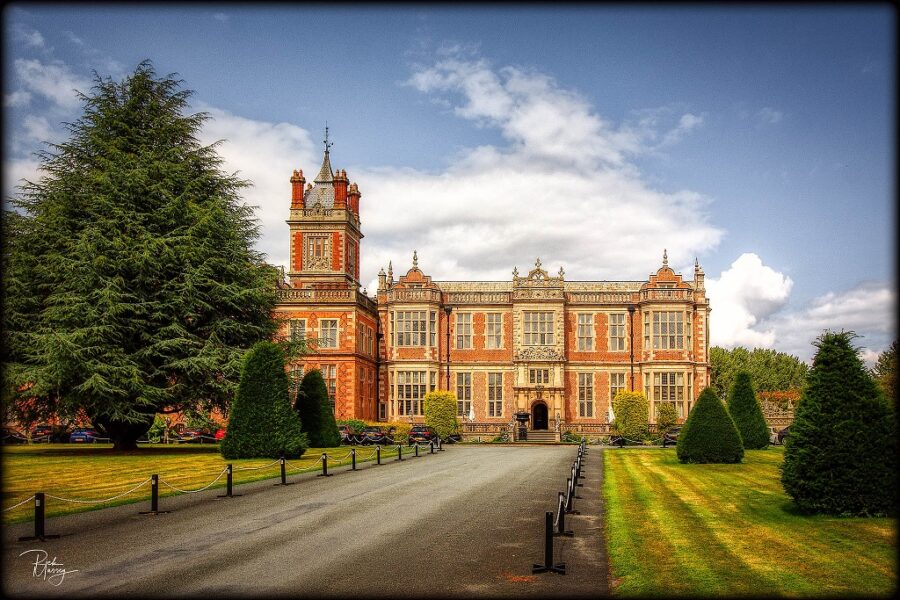
Crewe Hall is one of the Duchy of Lancaster properties. Credit: Rick Massey via CC BY 2.0 bit.ly/3U9ECZF
The Cheshire Survey
The Cheshire Survey is mainly made up of a large rural estate to the east of Crewe. This estate, which totals 3,760 acres, is centred on the historic properties of Crewe Hall and Crewe Hall Farm, where the Duchy has created an office location in converted agricultural buildings.
The 11 main farms on the Crewe estate are largely involved in dairy, arable, and livestock production. The estate also includes equestrian businesses, woodland, and a residential lettings portfolio of 66 rural cottages and farmhouses.
As Cheshire East Council strives to meet housing targets, more and more fringe land around Crewe is being called upon for release for development. In October 2021, housebuilder David Wilson Homes secured consent to deliver 146 homes in Crewe on Duchy-owned land.
One of the largest commercial businesses on the Duchy estate is the roadside service area that sits alongside Junction 16 of the M6. The Cheshire Survey also includes a small estate at Marbury on the Cheshire-Shropshire border.
- READ MORE: Raise a glass to the Queen, the Duke of Lancaster
- READ MORE: Photos of Queen Elizabeth II’s visits to the North West
The Lancashire Survey
The Duchy of Lancaster has ancient and extensive associations with the County Palatine of Lancaster, with the historic Lancaster Castle at its heart.
The Lancashire Survey extends to 9,740 acres, comprising four rural estates. Myerscough, north of Preston, has been owned since the 13th century. Wyreside, Salwick and Whitewell were purchased by the Duchy of Lancaster a little later.
Whitewell is the largest estate by area at 6,370 acres, and lies within the Forest of Bowland, a recognised Area of Outstanding Natural Beauty. The noted Inn at Whitewell Hotel – where the Queen and Prince Philip had a celebratory meal for the monarch’s 80th birthday – lies within the estate, and the Duchy’s first holiday cottage in Lancashire was completed at Root Farm, Dunsop Bridge.
The Lancashire estates include livestock-based farms as well as over 50 houses and cottages.
The other three surveys are the minerals survey, extending from South Wales to North Yorkshire, and including limestone and sandstone quarries; the urban survey, which covers the commercial properties in London and other cities – in 2015, the Duchy paid £10.6m for two buildings totalling 175,000 sq ft at Estuary Commerce Park, Liverpool; and the foreshore survey.
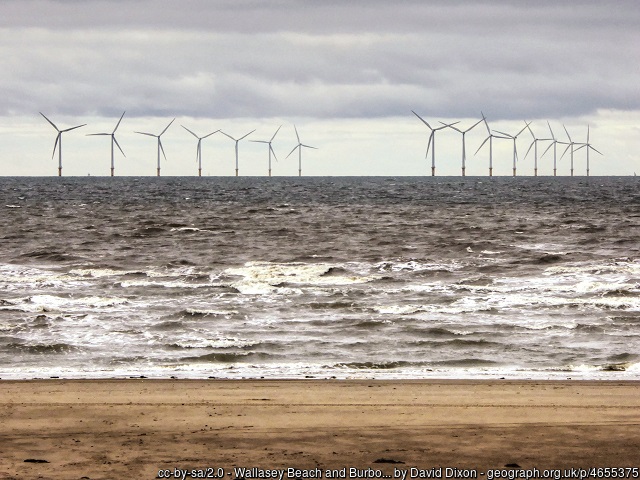
Burbo Bank Offshore Wind Farm is one of the properties owned now by King Charles III. Credit: David Dixon via CC BY-SA 2.0
The Foreshore survey
The Duchy of Lancaster’s Foreshore runs between the midpoint of the River Mersey in the south, to Barrow in Furness in the north.
The Lancashire Foreshore forms part of the Duchy of Lancaster’s ancient inheritance. Extensive interests were sold during the 19th century, including the Mersey dock system and land along Blackpool’s promenade.
According to the Duchy’s website, there are 98 individual lettings in total, the most recent being a lease as part of the Mersey Gateway bridge project, which opened in 2017.
The rest of the Duchy’s Foreshore Survey comprises moorings, pipe bridges and outfall structures, wild fowling licences, sheep and cattle grazing on coastal marshes, sub-sea pipelines, and fibre optic cables.
The Duchy also owns various castles and historic buildings around the country. They include Halton Castle, leased by the local authority and operated by the Norton Priory museum trust; and Lancaster Castle, which has operated as a tourist attraction after closing as a prison in 2011. Lancaster Castle underwent a significant restoration led by architect BDP between 2017 and 2019.
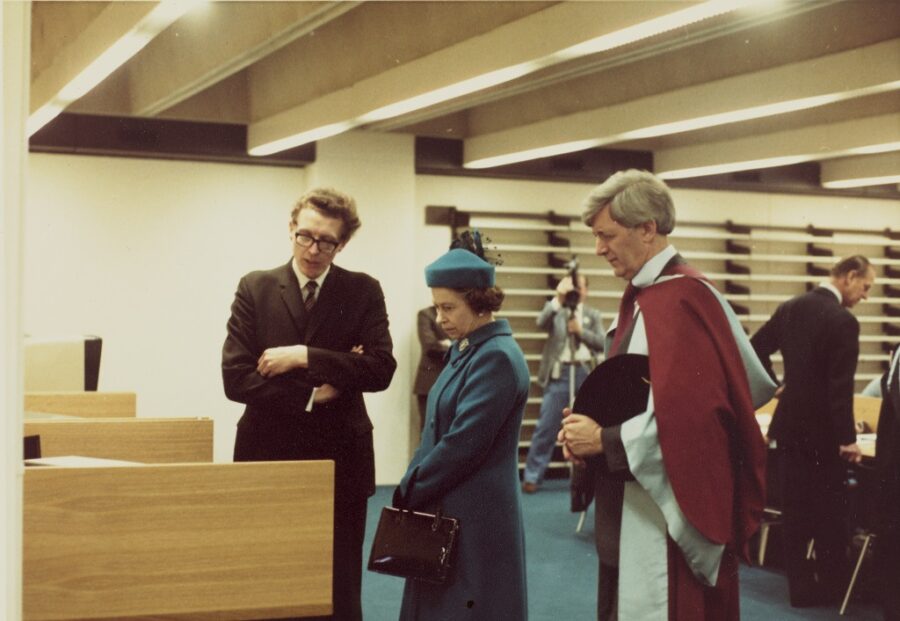
Queen Elizabeth II at the opening of University of Manchester’s main library extension in 1982. Credit: via University of Manchester
A patron for the region
As well as her land and property holdings, the Queen was the royal patron of Lancashire County Cricket Club, Manchester Geographical Society, Manchester Royal Infirmary, Royal Lancashire Agricultural Society, Royal Liverpool Philharmonic Choir, Royal Liverpool Philharmonic Society and Orchestra, The Duke of Lancaster’s Regiment and The Royal School for the Blind in Liverpool.
North West institutions she visited over the years included Lancaster University, the Liverpool School of Tropical Medicine, and the University of Manchester.
The Queen was often invited to open significant projects. One of these was Manchester’s Metrolink tram network, which she officially opened in a ceremony at St Peter’s Square in July 1992.
A further Mancunian source of pride, Chetham’s School of Music, welcomed Her Majesty in December 1994 to open the newly built New College House; she was back in the same area in 2012 for a visit to Manchester Victoria station.
The Queen and Prince Philip visited Liverpool in 2016, with a series of engagements including the official opening of the Exhibition Centre Liverpool and the new Alder Hey children’s hospital.
The couple also attended the International Festival of Business and took lunch at Liverpool Town Hall, a venue they also visited in 2002 as part of the Golden Jubilee celebrations.
The monarch visited St John’s Market in 1982, and Arrowe Park Hospital in Wirral in the same year. She also visited Liverpool in 2004, 2011, and on the Diamond Jubilee tour of 2012.
Her 1999 visit to the city included an engagement with Yoko Ono and the opening ceremony for the revamped Liverpool John Lennon Airport alongside Paul McCartney.


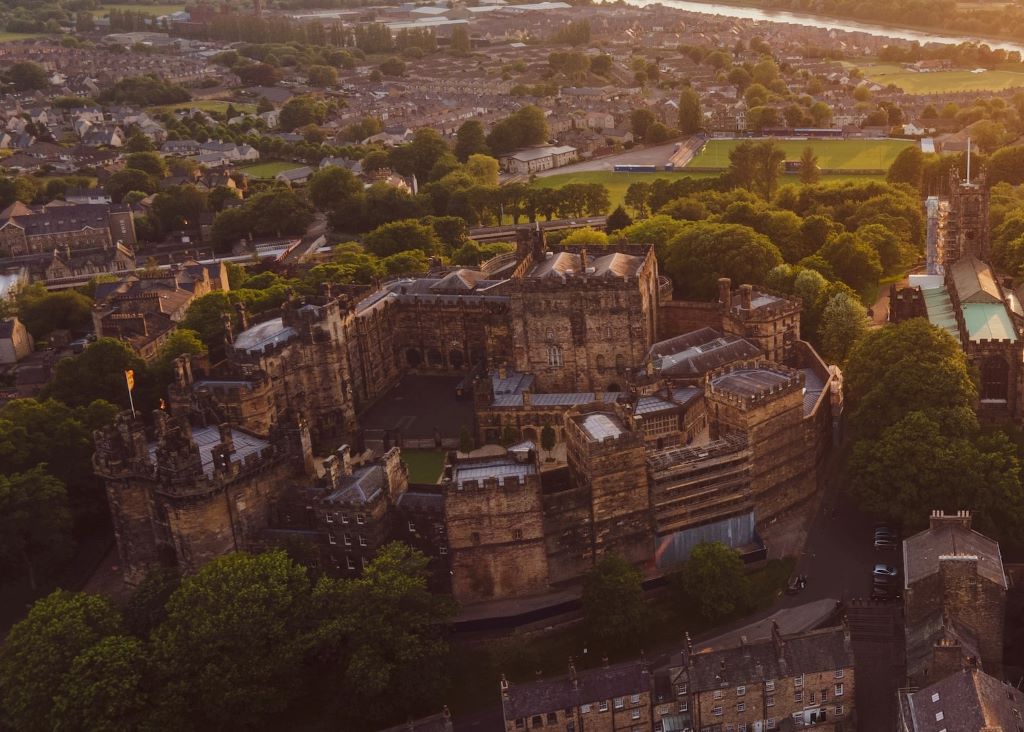
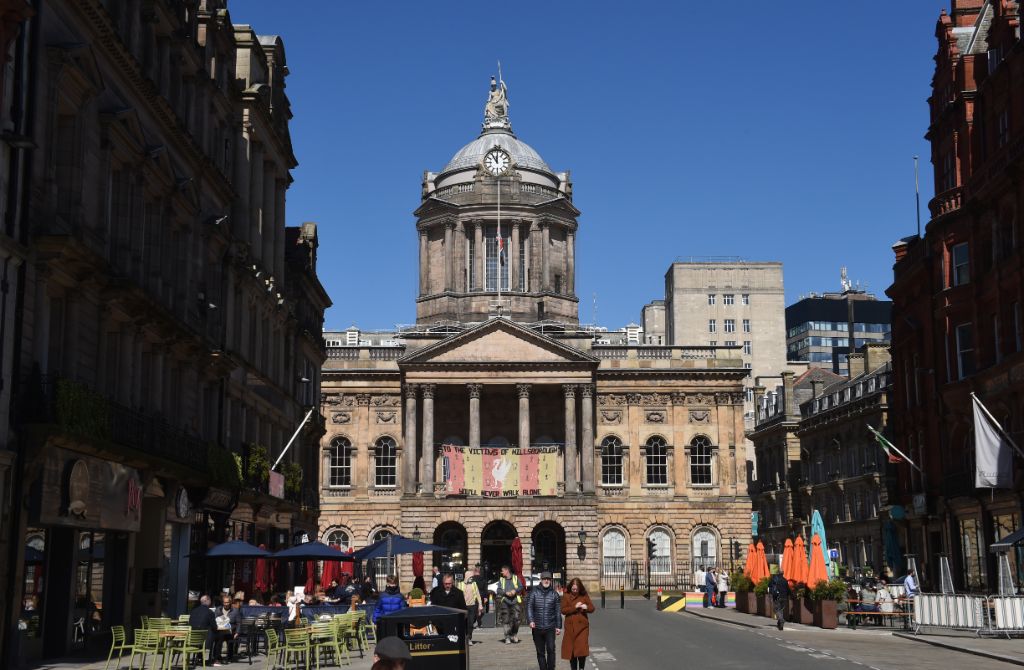
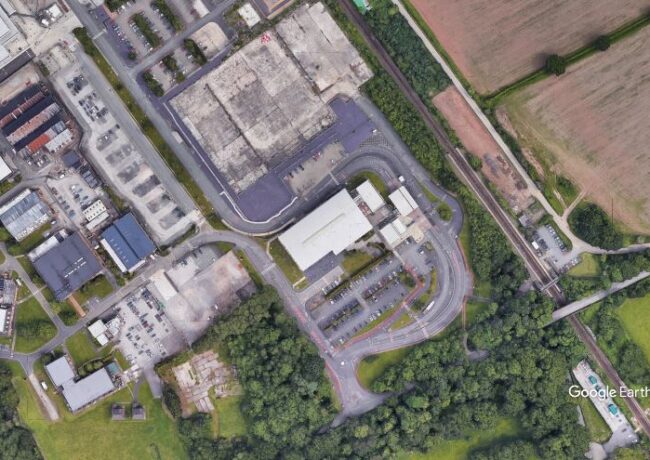
Superb and very interesting story.
By Old Hack
Hi ya, Old Hack,
What is interesting and why?
By Young Hack
Young Hack, we all find different things interesting, and your comment suggests that you don’t find this article interesting, unlike Old Hack and myself. Your question seems strange along with having an air of mock and antagonism.
By Anon
The fact the Crown Estate is heavily invested in London and not rest of country helps explain part establishment huge bias to London and especially transport plans that benefit property owners in London.
By Anonymous
Long live the king.
By Digbuth O'Hooligan
“. establishment huge bias to London and especially transport plans..” when Lancaster Castle was built it’s obvious the location was chosen to frustrate the railway station builders who rocked up 600 years later. And what’s interesting? According to the castle’s website: “Lancaster Castle, often known as John O’ Gaunt’s Castle, is one of the most historically fascinating surviving buildings in the country.” Well I didn’t know that; how interesting.
By Gaunt John
Can anyone confirm that the King owns the river Lune or if not who does
Thanks E.
By Edward Harwood-Jones